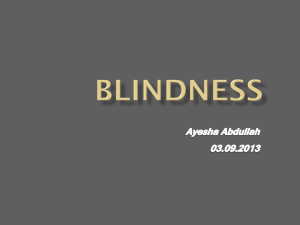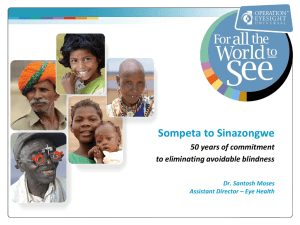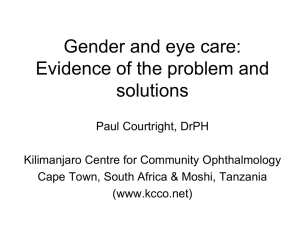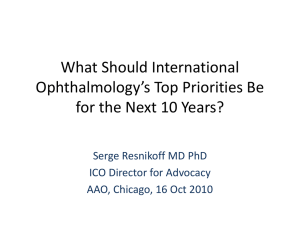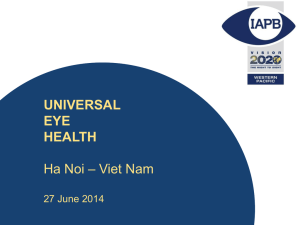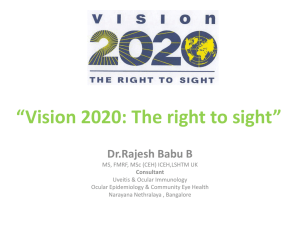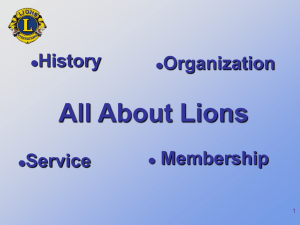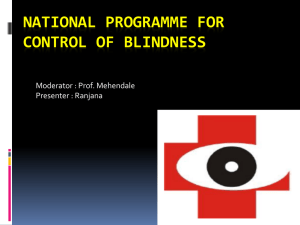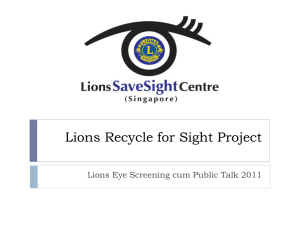Lions Club_New directions in the SightFirst Programme
advertisement
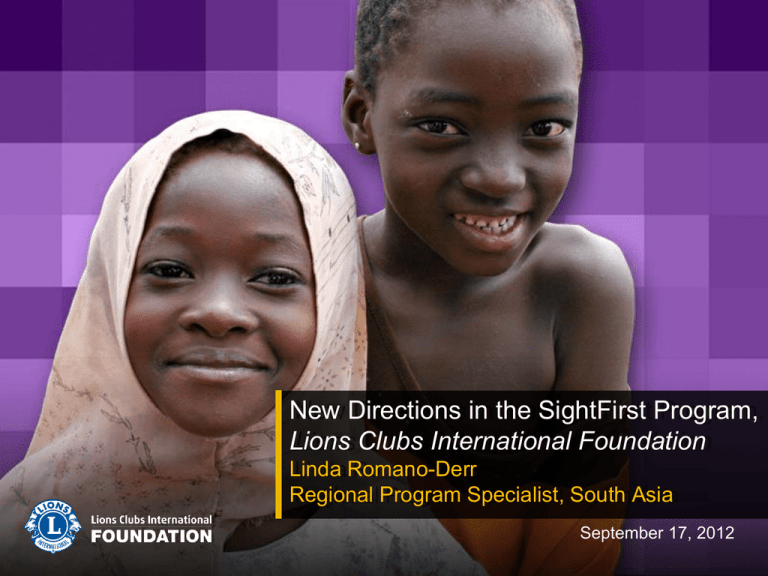
New Directions in the SightFirst Program, Lions Clubs International Foundation Linda Romano-Derr Regional Program Specialist, South Asia September 17, 2012 Lions Clubs International (LCI) and Lions Clubs International Foundation (LCIF) • World’s largest voluntary service organization o 1.35 million members worldwide, in 46,000 clubs in 207 countries • Lions Clubs International Foundation (LCIF) o Humanitarian arm of LCI o Established in 1968 o Primary service aims: • Humanitarian Services • Blindness prevention • Disaster relief and reconstruction • Children’s health and welfare SightFirst • SightFirst is a global initiative with the purpose of eliminating avoidable blindness as a global public health concern • Mission: To build comprehensive eye care systems to fight the major causes of blindness and care for people who are blind or visually impaired • SightFirst builds on Lions’ historical concern for the blind and visually impaired (Knights of the Blind) • 1,064 grants in 102 countries for a total of US$277 million since 1990 SightFirst Accomplishments • Restored sight to 7.68 million people through cataract surgeries • 30 million people saved from vision loss • Provided 147 million treatments for river blindness • Built or upgraded 702 eye-care facilities • Trained 659,000 ophthalmologists, ophthalmic nurses, other professional eye care workers and village health workers • Established 35 pediatric eye care centers, impacting the lives of 121 million children (in partnership with the WHO) SightFirst Approach • Controlling blinding diseases • Cataract • River blindness, • Trachoma • Diabetic retinopathy • Training desperately needed human resources • Strengthening eye care infrastructure SightFirst II: A new direction 3 overarching goals: 1. Control and eliminate major causes of avoidable blindness 2. Combat emerging threats to sight 3. Provide “Vision for All” through research, rehabilitation, and outreach to vulnerable populations VISION FOR ALL SightFirst I versus SightFirst II SF I: SF II: • Less complex projects, with one or two activities • Large-scale projects reaching a larger target population • Local situation considered in the development of a project, but little knowledge of the eye care priorities of the country or region • Complex and comprehensive projects that include aspects of both prevention and treatment • A well-developed support system in place at the district and regional levels to teach and aid clubs in the development of projects • Projects consistently developed in partnership with the MOH and within the framework of the national plan; extensive and successful partnerships with many of the leading blindness prevention experts worldwide • • Often weak engagement of the Ministry of Health and the national plan for the prevention of blindness Little collaboration with other partners working in blindness prevention We Care. We Serve. We Accomplish. Key Principles 1. Develop comprehensive eye care systems 2. Target underserved populations 3. Deliver high-quality eye care services 4. Create sustainable eye care services 5. Use data to identify and evaluate efforts 6. Hands-on Lions involvement 7. Emphasis on strategic partnerships with corporations, governments and NGOs. SightFirst Grants: 11 strategies & 5 objectives Cataract Childhood Blindness Trachoma Education & Rehabilitation for Blind & Low vision Persons Eye Health Education Low Vision URE Comprehensive Regional Training Diabetic Retinopathy River Blindness Research We Care. We Serve. We Accomplish. SightFirst portfolio SightFirst Grants: 11 strategies & 5 objectives Cataract Childhood Blindness Service Delivery Trachoma Education & Rehabilitation for Blind & Low vision Persons Eye Health Education Low Vision Human Resource Development Infrastructure Development URE Comprehensive Regional Training Prevention Diabetic Retinopathy River Blindness Monitoring & Evaluation Research We Care. We Serve. We Accomplish. Objectives SightFirst Grants: 11 strategies & 5 objectives Cataract Detection Service Delivery Childhood Blindness Treatment Trachoma Rehabilitation Education & Rehabilitation for Blind & Low vision Persons Human Resource Development Eye Care Professionals Community Health Workers Eye Health Education Low Vision Survey Infrastructure Development School Teachers Equipment URE Comprehensive Regional Training Expansion Prevention Advocacy Diabetic Retinopathy Public Relations River Blindness Education Materials Research Monitoring & Evaluation We Care. We Serve. We Accomplish. Getting involved in into new focus areas: Research Education and training for blind/VI Outreach to vulnerable populations* www.lcif.org THANK YOU
